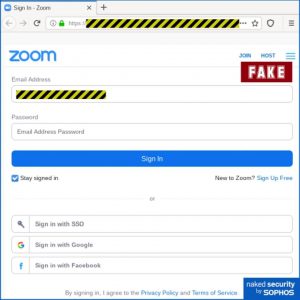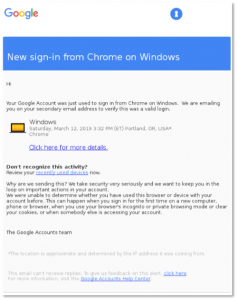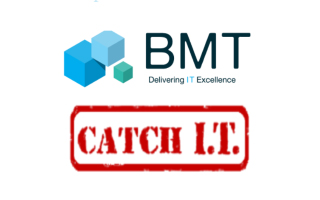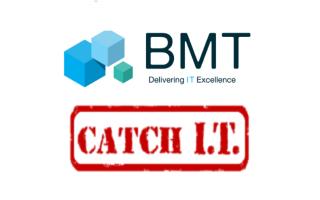
According to a recent IBM Cost of a Data Breach Report, small businesses have been hit especially hard by data breaches. Their losses average over $2.5 million, which can be significant for a company making $50 million or less in annual revenue and make survival after the breach difficult.
In fact, approximately 60% of small businesses have to close their doors within six months of a data breach because they’re not able to fully recover from the financial or reputation impact.
As the bad guys continue to become more sophisticated, we wanted to give you some examples of what to look for, and some things you can do to protect yourself.
Recent Topics/Content to look for:
- Fake Zoom HR Meetings – purporting to be quarterly reviews or “crucial” all hands meetings with HR and payroll.
 Google Sign-In Imitation Emails – fake alert claiming to have identified an unauthorized sign-in to you Chrome account.
Google Sign-In Imitation Emails – fake alert claiming to have identified an unauthorized sign-in to you Chrome account.- Stimulus Check Emails/Texts – scams looking to verify bank information in order to receive faster stimulus check delivery.
What Should You Do?
Although attacks continue to rise in numbers and sophistication, there are 3 things you can do to best protect yourself and your organization.
- Update Software Regularly – Make sure all application software and operating systems are updated on a consistent basis. Install patches whenever available. Your network is vulnerable when programs aren’t patched and updated regularly.
- Back Up Data – Keeping data backed up to the Cloud is the best way to ensure data is safe and accessible in the event of a breach.
- Implement Ongoing Security Awareness Training – Employees are the weakest link in the data security chain. Ongoing training should be part of onboarding and continue with every member of your team. A good program will teach staff what to look for and provide employers with reportable data.
Need assistance getting started? A great, cost-effective place to begin is with an IT Health Check. A Health Check is a snapshot that overviews the health of your IT operations. You’ll get a better understanding of where your strengths and weaknesses lie, resulting in real insight that can uncover new ways to accelerate your business.







